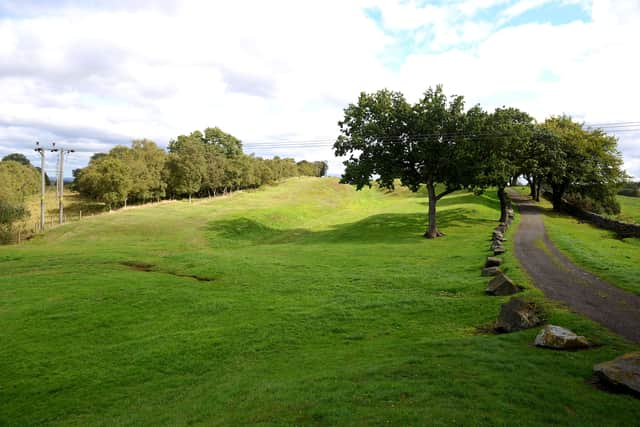5 free days out in and around Glasgow for history lovers
and live on Freeview channel 276
One of the most difficult jobs of being a parent is keeping a child entertained and engaged during their school breaks.
The cost of living crisis - increasing food, energy and gas bills, on top of rising taxes - has made that challenge even more testing.
Advertisement
Hide AdAdvertisement
Hide AdThankfully, Glasgow and the surrounding area has an abundance of sites, museums and day trips capable of keeping kids entertained.
Here are just five days out for families who love their history.


Antonine Wall
One of the biggest projects in Scotland’s long history was a bit of a waste of time.
Not long after the erection of Hadrian’s Wall, Roman Emperor Antoninus Pius decided to push further north into Scotland and establish a new border between the Clyde and Forth, with constructing starting on the Antonine Wall in 142AD.
Advertisement
Hide AdAdvertisement
Hide AdYet, just eight years after completion, the wall was abandoned and the Romans moved back down south.
While it might have been a waste for the Romans, it benefitted future archaeologists and people who want to go for a day out.
The wall is free to visit, with lots of walking sections across the central belt. But the best part to visit is in Bearsden. The remains of a Roman bathhouse have been saved, giving us an insight into Roman lives in Scotland.
Visit the Antonine Wall website to find out more.
Glasgow Cathedral and Necropolis
The oldest cathedral in mainland Scotland was erected in 1136 and is the oldest building in Glasgow.
Advertisement
Hide AdAdvertisement
Hide AdAs well as being one of the most stunning buildings in Scotland - it was the only cathedral to survive the Reformation in the 16th century - you can see how it has changed in its 800-year history.
Just next to the cathedral is the Necropolis - which featured at the end of the recent The Batman film.
It opened in the early 19th century as an interdenominational burial ground. It is a good chance to learn about some of Glasgow’s most important residents.
Learn more on the Glasgow Cathedral website.
Crookston Castle
The only surviving medieval castle in Glasgow can be found in Crookston, on the south west edge of the city.
Advertisement
Hide AdAdvertisement
Hide AdIt was built around 1400 and underwent extensive repairs following a siege the following century.
It’s not just a chance to see a wonderful castle - it is built on a hilltop and offers a stunning view over Glasgow.
Find out more on the Historic Environment Scotland website.
Kelvingrove Art Gallery and Museum
This hidden gem (joking) is one of Glasgow’s most famous landmarks and houses some of Europe’s best artworks, a fine collection of armour and arms, and a natural history collection.
The building opened in 1901 and re-opened in 2006 following a massive refurbishment project.
Advertisement
Hide AdAdvertisement
Hide AdWhether you want to see some Renoit or Monet classics, find out about Scotland’s first settlers, or learn about the Spitfire, you can do it all at the Kelvingrove Art Gallery and Museum.
Find out more on the Kelvingrove Art Gallery and Museum website.
Govan Stones
These medieval stones were carved between the 9th and 11th centuries to commemorate those who ruled the Kingdom of Strathclyde.
In the late 9th century, Vikings attacked the historic base of the Alt Clud kingdom at Dumbarton and killed the king.
Advertisement
Hide AdAdvertisement
Hide AdThe kingdom survived - albeit with a new name, Strathclyde - but moved further upstream to Govan. It would survive until being conquered by the Scots in the 11th century.
The stones can now be found at the Govan Old Parish Church.
Learn more on the Govan Stones website.
Comment Guidelines
National World encourages reader discussion on our stories. User feedback, insights and back-and-forth exchanges add a rich layer of context to reporting. Please review our Community Guidelines before commenting.
